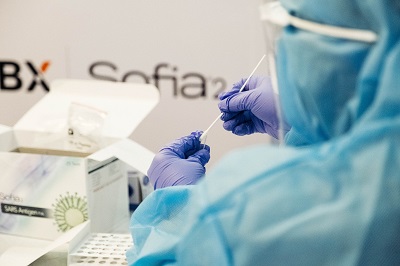How to apply for D-class medical device registration with the Saudi SFDA?
Release time:2025-01-02 14:31:27
The author:
source:
Make sure that the product meets the definition and classification criteria for a D-class medical device according to the SFDA’s guidelines. D-class devices are typically those that are non-invasive and low-risk, such as certain medical consumables and accessories.
To apply for the registration of a D-class medical device with the Saudi Food and Drug Authority (SFDA), you need to follow a specific process. D-class devices are considered to be low-risk medical devices, and the registration process is generally simpler than for higher-risk devices. Here’s a step-by-step guide:
1. Ensure Compliance with SFDA Requirements
- Make sure that the product meets the definition and classification criteria for a D-class medical device according to the SFDA’s guidelines. D-class devices are typically those that are non-invasive and low-risk, such as certain medical consumables and accessories.
2. Obtain a Saudi Arabian Agent
- If you are a foreign manufacturer, you will need a local authorized representative (Saudi Arabian agent) who is responsible for submitting the application and liaising with the SFDA on your behalf.
3. Prepare Required Documentation
The documentation requirements for D-class medical device registration are typically less stringent compared to higher-risk classes, but the following documents are generally required:
- Device Description: A detailed description of the medical device, its intended use, and how it functions.
- Device Labeling: Product labels and user manuals in Arabic and English, including warnings, instructions for use, and intended use.
- ISO Certification: A copy of the manufacturer's ISO 13485 certification or an equivalent quality management system certification.
- Declaration of Conformity: A document stating that the device conforms to the relevant Saudi standards, which may include conformity to ISO, IEC, or other relevant standards.
- Certificate of Free Sale: A certificate from the manufacturer’s home country stating that the device is legally sold and marketed in that country.
- Product Testing Reports: Depending on the device type, you may need to provide testing reports or certificates to demonstrate product safety and performance.
4. Submit the Application
- Log in to the SFDA’s Saudi Medical Device Electronic Services (MDES) platform or the SDAI Portal for device registration.
- Submit the required documents and pay the registration fees (fees are usually lower for D-class devices).
5. SFDA Review
- The SFDA will review the submitted documentation and may request additional information or clarification if necessary. For D-class devices, the review process is relatively quick, but the timeline may vary depending on the complexity of the device.
6. Approval and Issuance of Registration
- Once the SFDA has completed the review and is satisfied with the documentation and compliance, they will issue the registration certificate.
- The registration certificate allows the device to be marketed and sold in Saudi Arabia. This certificate is valid for a specific period (usually 5 years), after which it needs to be renewed.
7. Post-Market Surveillance and Reporting
- Once the device is on the market, the manufacturer or their local agent must monitor its performance and report any adverse events, complaints, or recalls to the SFDA as per the regulatory requirements.
Key Points to Remember:
- Ensure that the device complies with the SFDA’s Regulation for Medical Devices and other relevant standards.
- The registration process for D-class devices is generally faster and requires less documentation compared to higher-class devices, but it is still critical to comply with all SFDA requirements.
- Work closely with your Saudi Arabian agent to ensure smooth submission and follow-up with the SFDA.
Would you like more detailed information on any specific step or the documentation required?

Whatsapp or Wechat:+86 15816864648;email address:hito.lin@grzan.cn
.png)
.jpg)
.png)

.png)